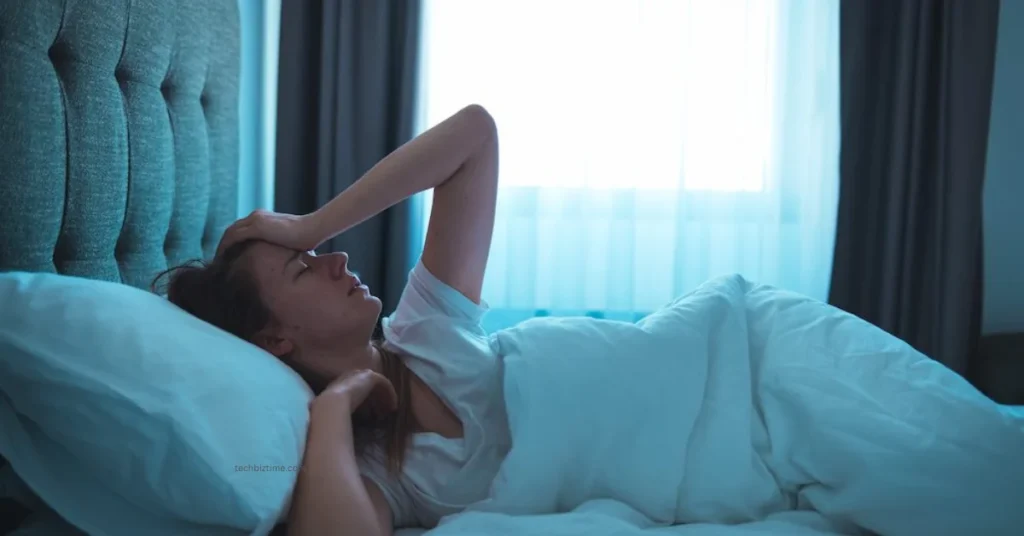What Is Broken Sleep?
Broken sleep is a serious problem that disrupts your sleep and can negatively affect your physical and mental health. Many factors can cause you to wake up in the middle of the night. Here are some reasons why you may be having trouble sleeping. A snoring partner or racing thoughts may be the cause.
Getting a good night’s rest will help you feel better the next day. Sleeping without interruption is the best way to strengthen your immune system, and without it, you will struggle to combat infections and decrease inflammation. When you don’t get enough sleep, you also risk developing serious health conditions, such as diabetes and heart disease. Sleep loss can even lead to depression and mood problems.
Causes Of Broken Sleep
Disruption Of Sleep Routine
One of the most common causes of broken sleep is disrupting a person’s sleeping routine. This can be caused by various factors, including lifestyle habits. However, the more serious problem is that sleep deprivation can significantly affect a person’s health. Even a few hours of sleep is essential to maintain health and performance.
Co-Existing Medical Conditions
Another cause of broken sleep is co-existing medical conditions. Certain conditions, such as chronic pain, may interfere with the ability to fall and stay asleep. These may cause insomnia, so it’s important to see your doctor if your symptoms persist. In addition, chronic pain and depression can cause broken sleep. This can also be considered as one of the causes of having weird dreams.
Is Broken Sleep Associated With Aging?
As we get older, getting quality sleep can be more difficult. While this isn’t an inevitable part of aging, research shows that older adults may experience less quality sleep for various reasons. These include decreased physical and mental functions, loss of loved ones, and life changes. Sleep problems can lead to a reduced quality of life and can also be linked to health problems. For these reasons, it is important to find out what is causing broken sleep in older adults.
Aging can also cause changes in our bodies. Our joints can stiffen, our brains slow down, and wounds take longer to heal. Our sleep patterns can also change as we age, causing us to experience broken sleep more often. For older adults, this can be particularly frustrating. Their old sleep habits are gone, and their ability to sleep through the noise has become a thing of the past.
Sleep patterns change as we age, but it is hard to tell when someone has a sleep disorder. Many of these changes are gradual, and people who don’t have a disorder may not realize they are experiencing any changes. Symptoms of sleep disorders include waking up frequently, experiencing difficulty falling asleep, or tossing and turning in bed. Insomnia, for example, can be triggered by pain or a change in the environment.
What Is Maintenance Insomnia?
Maintenance insomnia occurs when your body doesn’t allow you to sleep. It can be due to various reasons, including outside noise, a sudden change in temperature in your home, or even a physical ailment. It can also be the result of the medications you are taking. For example, some medications can cause you to be woken up during the night.
People with this problem have difficulty staying awake during the day and feel tired and irritable while awake. About half of all insomniacs suffer from sleep maintenance insomnia at one time or another. It is especially common among older adults and people who live alone. People who suffer from this disorder typically require a minimum of 8 hours of sleep a night. They must also be over 18 to risk developing this condition.
Regardless of the reasons behind your sleep maintenance insomnia, there are a few things you can do to improve your chances of falling asleep at night and staying asleep through the day. Following a schedule can reduce the chances of getting up during the night and keep a consistent sleep pattern. Maintaining a regular sleep schedule will also help your body’s balanced circadian rhythm. Keeping your sleep cycle regular and avoiding naps is one of the best ways to combat maintenance insomnia.
Tips To Stay Asleep Better
- There are many ways to make your bedroom more relaxing and help you fall asleep easier. For starters, avoid heavy meals and caffeine right before bedtime.
- Also, try not to exercise too late in the day. If you still cannot sleep after a few attempts, try sitting in a chair until you feel sleepy.
- Lastly, try to avoid electronic devices in the bedroom. The light from these gadgets can interfere with your sleep. Also, avoid watching horror movies or unsettling TV shows.
- Regular exercise is also a great way to sleep better at night. However, avoid strenuous physical activity before bedtime and follow social distancing guidelines while exercising. Simple things, such as wearing earplugs putting your cell phone on silent, or facing away from you, can also greatly impact your ability to sleep.
- Avoid watching television or playing computer games right before bed. They may contain blue light, which can disrupt your sleep. You can reduce this exposure by choosing devices with smaller screens or by installing light-altering software. Another good option for helping you fall asleep is to read a book. Many people find reading a relaxing and peaceful experience, and listening to an audiobook can help you fall asleep in no time.
- You can also try taking foods rich in magnesium to get proper sleep.
Lastly
The effects of sleep disruption are widespread. Research has linked repeated awakenings during sleep with an increased risk of developing neurodegenerative disease. Repeated interruptions of sleep also increase pain sensitivity. Some studies have also linked disturbed sleep to increased cancer risk. However, further research is needed to understand the complex relationship between sleep and cancer.
